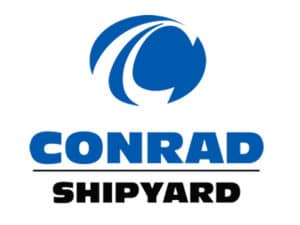
USCG publishes report on El Faro sinking
Written by Nick Blenkey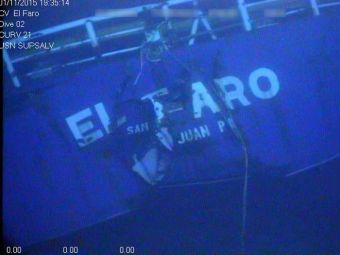
OCTOBER 2, 2017 — “The most important thing to remember is that 33 people lost their lives in this tragedy. If adopted, we believe the safety recommendations in our report will improve safety of life at sea,” said Capt. Jason Neubauer, Chairman of the Coast Guard El Faro Marine Board of Investigation, U.S. Coast Guard.
The board’s report was published yesterday, on the second anniversary of the loss of the S.S. El Faro during Hurricane Joaquin. The recommendations made by the board are extensive. They include a number that address weaknesses identified in the Alternate Compliance Program (ACP) under which a number of Coast Guard statutory survey and certification functions for U.S. flagged vessels are delegated to classification societies.
In addition to 31 safety recommendations they include four for administrative changes and one calling for civil penalty action to be taken against the vessel’s owner, TOTE Services.
The recommendations follow the board’s identification of the series of events that led to the sinking and the factors contributing to each one:
El Faro sailed within close proximity to Hurricane Joaquin
TOTE did not ensure the safety of marine operations and failed to provide shore side nautical operations supports to its vessels.
TOTE did not identify heavy weather as a risk in the Safety Management System (SMS) and the Coast Guard had not exercised its flag state authority to require identification of specific risks.
TOTE and the Master did not adequately identify the risk of heavy weather when preparing, evaluating, and approving the voyage plan prior to departure on the accident voyage.
TOTE and the Master and ship’s officers were not aware of vessel vulnerabilities and operating limitations in heavy weather conditions.
TOTE did not provide the tools and protocols for accurate weather observations. The Master and navigation crew did not adequately or accurately assess and report observed weather conditions.
TOTE did not provide adequate support and oversight to the crew of El Faro during the accident voyage.
The National Hurricane Center (NHC) created and distributed tropical weather forecasts for Tropical Storm and Hurricane Joaquin, which in later analysis proved to be inaccurate. Applied Weather Technologies used these inaccurate forecasts to create the Bon Voyage System (BVS) weather packages.
The Master and deck officers were not aware of the inherent latency in the BVS data when compared to the NHC forecasts. Additionally, the Master and deck officers were not aware that they received one BVS data package with a redundant hurricane trackline.
The Master and deck officers relied primarily on graphical BVS weather forecasts rather than the most current NHC data received via SAT-C. El Faro crew did not take advantage of BVS’s tropical update feature and the ability to send BVS weather information directly to the bridge.
The Master did not effectively integrate the use of Bridge Resource Management techniques during the accident voyage. Furthermore, the Master of El Faro did not order a reduction in the speed or consider the limitations of the engineering plant as El Faro converged on a rapidly intensifying hurricane. This resulted in loss of propulsion, cargo shifting and flooding.
The Master of El Faro failed to carry out his responsibilities and duties as Captain of the vessel between 8:00 PM on September 30 and 4:00 AM on October 1, 2015. Notably, the Master failed to download the 11:00 PM BVS data package, and failed to act on reports from the 3/M and 2/M regarding the increased severity and narrowing of the closest point of approach to Hurricane Joaquin, and the suggested course changes to the south to increase their distance from the hurricane.
The cumulative effects of anxiety, fatigue, and vessel motion from heavy weather degraded the crew’s decision making and physical performance of duties during the accident voyage.
El Faro Experienced an Initial Starboard List and Intermittent Flooding
El Faro developed a sustained wind heel to starboard as a result of the course change from 155 degrees to 116 degrees after passing south of San Salvador at approximately 1:30 AM on October 1. The wind heel brought the 2nd deck closer to the water line. Intermittent flooding into one or more cargo holds on El Faro began at this time. Water was able to enter Hold 3 through the open scuttle, and likely through deteriorated internal structures and open cargo hold ventilation fire dampers, which compromised watertight integrity.
The increasing of El Faro’s load line drafts following its 2005-2006 conversion, combined with loading to near full capacity with minimal stability margin, increased the vessel’s vulnerability to flooding in heavy weather.
Despite the apparent increase in cargo carrying capacity and increase load line draft which would result, the 2005-2006 conversion was not designated as a major conversion by the Coast Guard. Based on the available documentation, the final decision was based on the “Precedence Principle,” in that the Coast Guard had previously not designated similar conversions of sister vessels El Yunque and El Morro as major conversions.
The crew’s complacency, lack of training and procedures, and El Faro’s design contributed to the crew’s failure to assess whether the vessel’s watertight integrity was compromised.
El Faro’s conversion in 2005-2006, which converted outboard ballast tanks to fixed ballast, severely limited the vessel’s ability to improve stability at sea in the event of heavy weather or flooding.
The Master, C/M, and crew did not ensure that stevedores and longshoremen secured cargo in accordance with the Cargo Securing Manual, which contributed to RO/RO cargo breaking free.
The practice of sailing with open cargo hold ventilation system fire dampers in accordance with SOLAS II-2, Regulation 20 and U.S. regulations created a downflooding vulnerability which is not adequately considered for the purposes of intact and damage stability, nor for the definitions of weathertight and watertight closures for the purpose of the applicable Load Line Convention.
The Coast Guard practice of verbally passing deficiency information to the ACS surveyor without written documentation of the deficient condition resulted in an unknown or incomplete compliance and material condition history of El Faro.
El Faro experienced a reduction in propulsion
El Faro’s reduction in speed, from approximately 16 knots to 9 knots that occurred
between 3:45 AM to 4:15 AM on October 1 was the result of the routine blowing of tubes and the C/M making course changes. El Faro never reached a speed through the water above 10 knots for the remainder of the voyage.
El Faro’s departure with a main lube oil sump level of 24.6″, which was below the Machinery Operating Manual recommended operating level of 27″, reduced the crew’s ability to maintain lube oil suction for the main propulsion plant. Prior to 4:36 AM, El Faro’s main propulsion unit developed intermittent lube oil problems due to the starboard list.
El Faro Incurred a Severe Port List and Lost Propulsion
At 5:54 AM on October 1, the Master altered course to intentionally put the wind on the vessel’s starboard side to induce a port list and enable the C/M to access and close the Hold 3 starboard scuttle. This port list was exacerbated by his previous order to transfer ramp tank ballast to port, and resulted in a port list that was greater than the previous starboard list and a dynamic shifting of cargo and flood water.
The port list, combined with the offset of the lube oil suction bellmouth 22″ to starboard of centerline, resulted in the loss of lube oil suction and subsequent loss of propulsion at around 6:00 AM.
Coast Guard and ABS plan review for El Faro’s lube oil system did not consider the worst case angle of inclination in combination with the full range of lube oil sump operating levels specified in the machinery operating manual. This led the crew to operate with a lube oil sump level within the operating range specified on the Coast Guard and ABS approved drawing, but below the 27″ operating level, which was the only level reviewed by ABS.
The Master and C/E did not have a complete understanding of the vulnerabilities of the lube oil system design, specifically the offset suction. This lack of understanding hampered their ability to properly operate the ship in the prevailing conditions.
TOTE’s lack of procedures for storm avoidance and vessel specific heavy weather plans containing engineering operating procedures for heavy weather contributed to the loss of propulsion.
El Faro sank
The loss of propulsion resulted in the vessel drifting and aligning with the trough of the sea, exposing the beam of the vessel to the full force of the sea and wind.
Even after securing the scuttle to Hold 3, water continued to flood into cargo holds through ventilation openings, and also likely between cargo holds through leaking gaskets on large watertight cargo hold doors.
The El Faro crew did not have adequate knowledge of the ship or ship’s systems to identify the sources of the flooding, nor did they have equipment or training to properly respond to the flooding.
Even though El Faro met applicable intact and damage stability standards as loaded for the accident voyage, the vessel could not have survived uncontrolled flooding of even a single cargo hold given the extreme wind and sea conditions encountered in Hurricane Joaquin.
All 33 Persons Aboard El Faro Are Missing and Presumed Deceased
A lack of effective training and drills by crew members, and inadequate oversight by TOTE, Coast Guard and ABS, resulted in the crew and riding crew members being unprepared to undertake the proper actions required for surviving in an abandon ship scenario.
After 5:43 AM on October 1, the Master failed to recognize the magnitude of the threat presented by the flooding into the hold combined with the heavy weather conditions. The Master did not take appropriate action commensurate with the emergent nature of the situation onboard El Faro, including alerting the crew and making preparations for abandoning ship.
When the Master made the decision to abandon ship, approximately 10 minutes before the vessel sank, he did not make a final distress notification to shore to update his earlier report to TOTE’s Designated Person Ashore that they were not abandoning ship. This delayed the Coast Guard’s awareness that El Faro was sinking and the crew was abandoning ship, and impacted the Coast Guard’s search and rescue operation.
Although El Faro’s open lifeboats met applicable standards (SOLAS 60), they were completely inadequate to be considered as an option for the crew to abandon ship in the prevailing conditions.
The Coast Guard’s existing Search and Rescue equipment and procedures were unable to effectively mark and track a deceased El Faro crew member for eventual recovery. As a result the crew member remains missing and unidentified.
Unsafe Actions or Conditions that Were Not Causal Factors in this Casualty
Other than class specific guides that provide for voluntary review (and certification) of software for container loading and securing calculations for vessels desiring the special class notation, there is no specific U.S. or international requirement for review and approval of software for cargo loading and securing calculations. The Coast Guard also has not published any policy or guidance regarding such software or calculations.
There are no domestic regulations or policy for Coast Guard approval of stability software, and the Coast Guard has not delegated any such approval authority to an ACS.
As a result of TOTE’s failure to notify ABS and the Coast Guard about the lifeboat davit repair work on September 28 and 29, 2015, the full materiel condition of the lifeboat davit repairs before El Faro departed could not be assessed.
Evidence of Acts subject to Civil Penalty
STCW rest violations – on numerous occasions there were violations for the rest hours prescribed in STCW for deck officers serving onboard El Faro, these violations were systemic and not addressed by TOTE.
Potential violation of 46 U.S.C. § 8106(a)(4) – no safety orientation or Coast Guard approved Basic Safety Training (BST) for the Polish riding crew.
Failure to notify the Coast Guard or ABS of repairs to primary lifesaving appliances that were conducted on September 28 and 29, 2015, just prior to El Faro’s departure from Jacksonville on the accident voyage.
Failure to notify the Coast Guard or ABS of repairs to El Faro’s main propulsion boiler superheating piping on August 24, 2015.

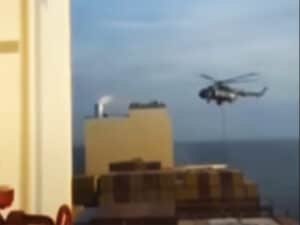
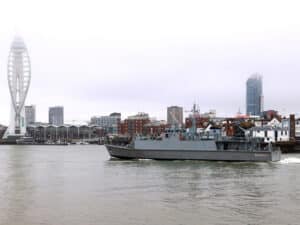

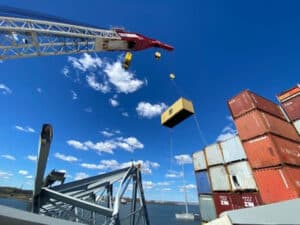
Leave a Reply
You must be logged in to post a comment.